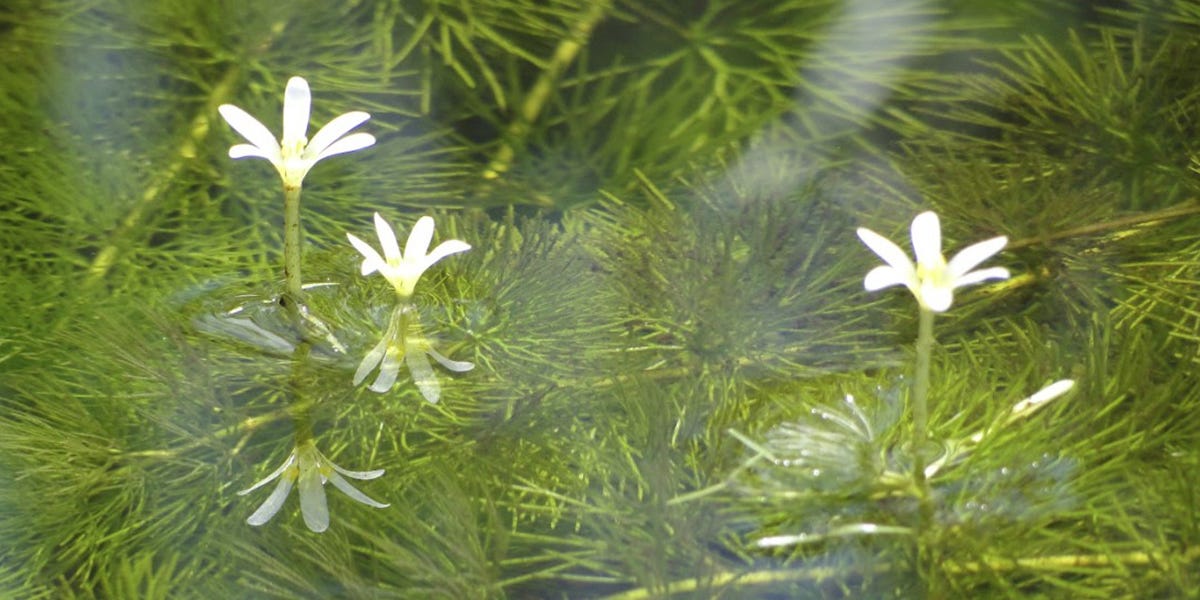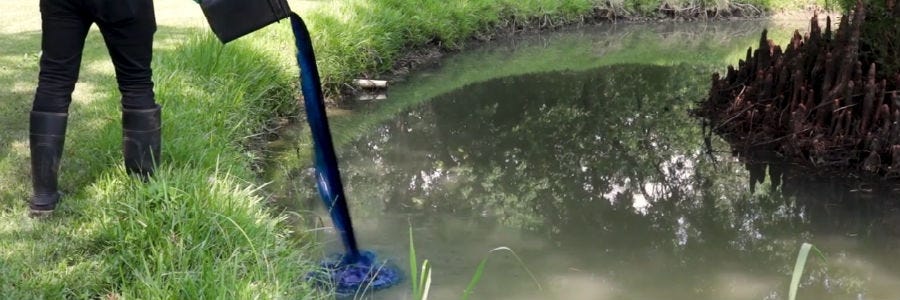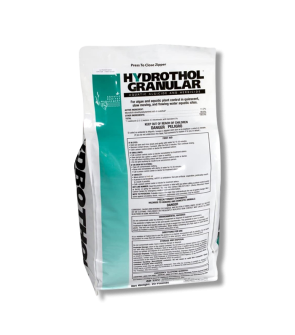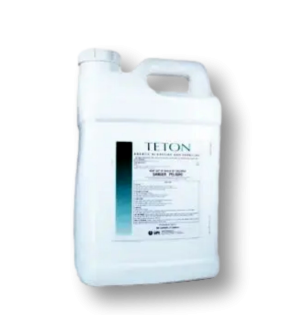Gain access to personalized product screening, the best pricing, rewards, and more!
Most Effective Products
Fanwort Control: How To Get Rid of Fanwort
Fanwort (cabomba carolina) is a submerged plant that roots on the bottom of lakes and rivers. Fanwort plants can be found in Ireland, the waters of Asia and Australia as well as in the Central Ontario region of Canada in the Crowe River and water in the northern United States. Fanwort tends to thrive in waters that are acidic.
Fanwort is a fast-growing plant with fan shaped leaves and is notorious for forming thick mats which crowd out native plants, block sunlight to submerged plants, disrupt fish communities and clog drainage canals and streams. Because of this, they have been known to be costly to the economy. If you have fanwort growing on your body of water, Solutions Pest and Lawn is the right place to get products to eliminate this invasive species effectively.
Our DIY guide to getting rid of fanwort was developed by pest control professionals to completely control fanwort. Using the products mentioned and following our step by step instructions you will get rid of fanwort quickly and affordably.
Identification

Fanwort is a unique plant that can be confused with other plants like bladderwort, white-water crowfoot, northern water-milfoil, water marigold, and coontail. To be sure you're dealing with fanwort, check to see if the plant is submerged and then closely observe the leaves, which are floating and frilly.
Under the water, pairs of finely divided, fan-shaped leaves grow on opposite sides of the main stem, creating a feathery effect. The fanwort plant also has small floating oblong leaves up to three centimeters long.
Fanwort flowers from late spring to early fall. The flowers usually rise above the surface of the water. They are 0.6 to 1.5 centimeters wide and can be colored white to pale yellow, sometimes with a pink or purple tinge.
Use our description and the image provided above to properly identify fanwort. If you are still not sure, contact us along with a close-up picture of the plant and we will help you properly ID the aquatic weed you have.
Inspection

Where to Inspect
Fanwort is a rooted submersed plant but it may have submersed and floating leaves. Generally this aquatic weed grows in 3 to 10 feet of water and is frequently found in ponds, lakes and quiet streams.
What To Look For
Look for frilly floating leaves in the water. If the fanwort has flowered, look for white to pink or purplish flowers which will rise above the surface of the water.
Treatment
Before you treat for fanwort, make sure you have on the proper personal protective equipment (PPE) in the form of gloves, safety glasses, long-sleeve shirts, long-sleeve pants, closed-toe shoes with socks, and a respirator mask.
Our top recommendations of herbicides to control fanwort is Fluridone Aquatic Herbicide. This selective herbicide delivers excellent control of fanwort and carries a broad spectrum label so it can kill off other aquatic weeds that happen to be growing on your water body too.
It is strongly recommended to consult with your appropriate state or local water authorities before applying Fluridone Aquatic Herbicide as permits may be required for the application site.
Step 1 - Spray Herbicide

Apply Fluridone Aquatic Herbicide to your pond or lake during ideal temperatures and follow the instructions carefully on the product label.
For ponds, apply a concentration of 45 ppb at 3.8 fl. oz. of product per acre for every feet of average water depth. According to the label, dense weed infestations should be made at 90 ppb at 7.7 fl. oz of product per acre per feet of water depth. Application of Fluridone Aquatic Herbicide should not be exceeded past 90 ppb per annual growth cycle.
For single application of whole lakes or reservoirs, apply a concentration of 10 ppb at 1.0 fl. oz. of product per acre for every feet of average water depth. If these water sources contain a functional potable water intake within 1/4 mile of these functional potable water intake then no more than 20 ppb may be made within a single application. You cannot apply more than a 150 ppb (sum of all applications) per annual growth cycle.
Step 2 - Reapply As Necessary
Reapplication may be necessary to totally get rid of fanwort (if you have not already exceeded the sum of all applications in a total of 150 ppb). Once the weeds have wilted and become dead, use a rake or aquatic weed cutter to remove as much of the dead plant as possible. This prevents dead plants and muck from building up and keeps your water clear.
Prevention
Apply Vision Pond Dye to your pond to prevent fanwort from coming back. Vision Pond Dye improves the look of your pond and reduces sunlight into the water which hinders photosynthesis and plant growth.
Key Takeaways
- Fanwort are frilly, fan-shaped leaves which can create large mats in ponds and lakes and interfere with fishing and recreation.
- Diquat and Fluridone are our top herbicide recommendations to eliminate this problem aquatic weed.
- To prevent fanwort from returning, monitor your pond regularly and reapply Diquat or Fluridone as a preventive treatment as well as apply Vision Pond Dye to keep vegetation growth down.









